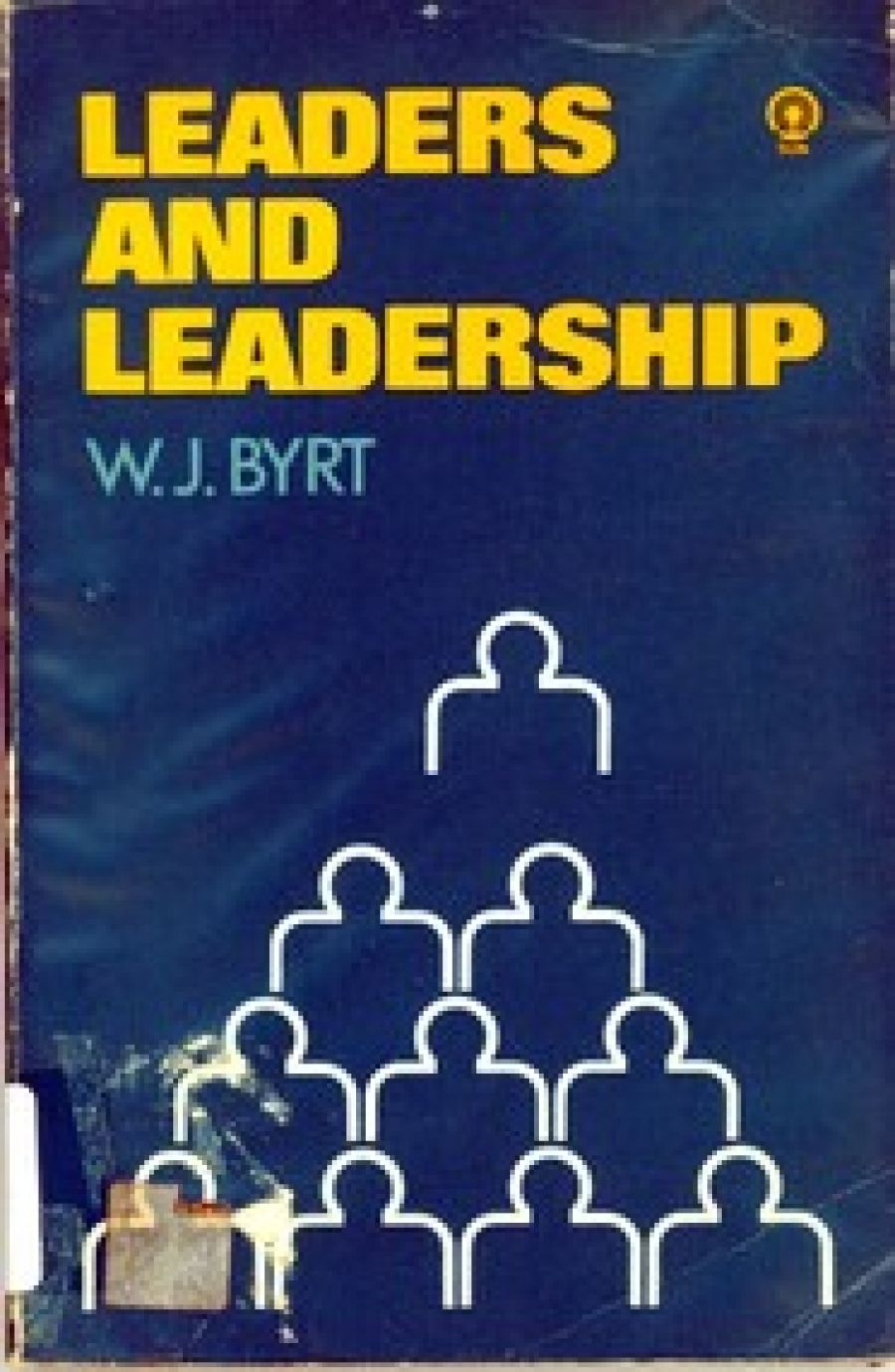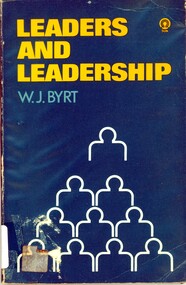
- Free Article: No
- Contents Category: Politics
- Review Article: Yes
- Article Title: It’s not very good
- Online Only: No
- Custom Highlight Text:
‘What is a leader?’ asks the rather breathless blurb on the back of W. J. Byrt’s Leaders and Leadership. ‘Is he the product of the situation in which he finds himself? Is he the possessor of definite character traits? Does he have an inherent charisma which elevates him above his fellows? Are the determining factors social, political, personal or intellectual or some mystical combination of them all?’ These are interesting questions: the answers to them would be still more interesting. However, the best the author is able to come up with, after 175 pages of fairly repetitious theorising and examplifying, is the following: ‘Leadership is a process whereby the behaviour of the led is influenced by a leader of leaders. The process depends on the leader being able, or being perceived to be able, to assist the led in achieving the satisfaction of certain needs within certain situations.’
- Book 1 Title: Leaders and Leadership
- Book 1 Biblio: Sun Books $12.95 hb, 194 pp
- Book 1 Cover Small (400 x 600):

- Book 1 Cover (800 x 1200):

A captious critic might describe this definition as breathtakingly trivial, but Byrt will have none of it. ‘The statement that leadership is a function of the leader, the led and the situation. has been described variously as a statement of the obvious and as monumentally useless,’ he admits. ‘These are harsh judgements. As a statement of theory, it is just about all we have. It is also a true statement; what is needed is to refine it and make it operational. This has been the purpose of this book.’
It is not clear just what Byrt means by ‘operational’. He certainly does not mean providing a blueprint for successful leadership along the lines of Niccolo Macchiavelli’s classic The Prince:, he specifically denies any such aim. He also apparently does not intend providing a guide to the sort of qualities one should look for in a successful leader; he says, again fairly obviously, that they vary from case to case, and that qualities which work in one situation may not work in a different one. Since none of us ever really believed that Johannes BjelkePetersen, in spite of his record term as Queensland Premier, would be a raging success if he ran as president of the United States, this is not terribly helpful. Again, all we are offered is generalities. Most leaders are ambitious; many are slightly neurotic. Successful ones generally have a capacity for hard work, a fair degree of intelligence, and an ability to communicate. It is hard to see how these observations substantially advance the sum of human knowledge.
What should be the most interesting part of the book comes in the second half, where Byrt examines a number of prominent Australian leaders under the headings: abilities; personality; bases of power and influence; leadership role; tactics of leadership; and assessment as a leader. I say it should be the most interesting, but in fact the book fails here too. The choice of subjects is arbitrary, and the observations about them superficial and mainly second hand. When the author appears to be relying on personal knowledge, as when he is dealing with academic bureaucrats, he has felt the need to preserve their anonymity, thus making it impossible to judge the worth of his statements about them.
In all, it is a disappointing product, and one that leaves a feeling of irritation by the end; the natural reaction is a feeling of either having missed the point altogether, or doubting whether there ever really was one.


Comments powered by CComment